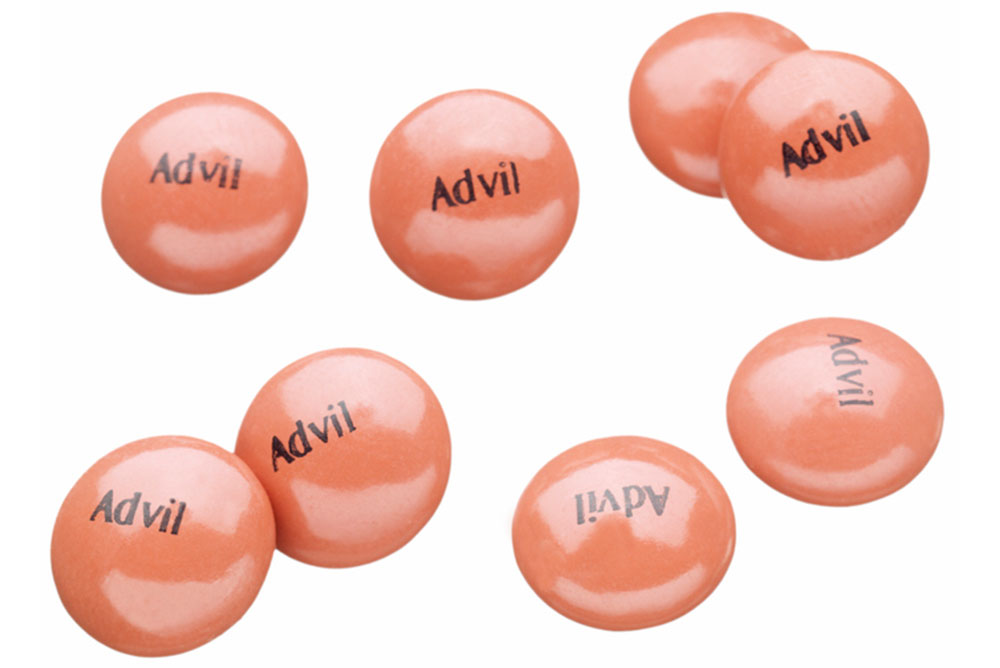
iStock
By Mary Carpenter
PHILADELPHIA visual artist E.C. had been coughing for a few weeks— before the coughing intensified over two more weeks, with the addition of intense chills during the second week.
Admitted through the ER, the 68-year-old frequent mountain biker stayed 12 days in the hospital with a regular turnover of specialists proposing different diagnoses and treatments—along with regular Covid testing. Ultimately blame fell on Advil, too much over too many years—based on testing and doctors’ consensus, but without self-reported abuse of the drug or definitive laboratory proof.
To treat the first diagnosis of pneumonia, E.C. received I.V. antibiotics; a nasal cannula to provide supplemental oxygen; and Tessalon Perles, or benzonatate, a numbing agent that subdues the cough reflex. When airways become raw and irritated—following a cold or, in this case, half-hour long coughing “fits” — invading bacteria or viruses can cause pneumonia, as well as acute bronchitis, inflammation of the large airways; or asthma, which causes excess mucus and wheezing and can cause permanent narrowing of the airways—or both conditions at the same time.
When antibiotics failed to improve E.C.’s still-worsening cough and chills, treatment switched to steroid medications, in this case prednisone—which decreases inflammation in the bronchi, relaxes the surrounding muscles and can help with persistent coughing. Steroids often provide the ultimate relief in cases of acute bronchitis, acute asthma or when the two exist together.
Extensive testing throughout E.C.’s hospital stay found none of the usual causes of pneumonia— viruses or bacteria, such as legionella—but instead identified two difficult-to-explain clues. The first was nodules on the lungs—also called spots or shadows—which are round and denser than normal lung tissue, and usually consist of scars from healed infections or irritants in the air, though these can be early signs of cancer. While a few had shown up on an X-ray of E.C.’s lungs taken years earlier, these had now multiplied—but with no discernible cause.
The other clue was elevated eosinophils, a type of white blood cell that aids in the body’s immune response, notably to parasites, and are active in the respiratory tract. Mild or moderately elevated eosinophil levels for most people are transient and require little to no treatment, although they can indicate asthma.
Possible causes of the “very high” eosinophil count in E.C.’s lungs included infections, allergies and inflammatory disorders, along with a host of different drugs. According to an Israeli study, in cases of the rare eosinophilic pneumonia (EP), “almost every family of medication was implicated…a higher prevalence among a few pharmacological families” — that included non-steroidal anti-inflammatory drugs (NSAIDS).
The researchers hypothesized some “connection between the pathogenesis of EP and the mechanism of action of those commonly used medications.” (Eosinophilic asthma can also make patients “highly sensitive” to the effects of NSAIDS —which can “inflame your airways and cause serious growths in the lining of your nose called nasal polyps,” according to Web MD.)
On the other hand, “defining a medication as the cause of eosinophilia requires clinical judgment, because no laboratory test alone can confirm the role of a specific medicine,” write Harvard immunologist and infectious disease specialist Peter Weller and colleagues. E.C. had taken Advil during limited periods over the years for pain due to injuries and arthritis, but eosinophilia has many other possible causes, including chemicals, air pollution and infection.
NSAIDS used to treat inflammation and alleviate pain —often that caused by headache, lower back issues and arthritis —include dozens of medications, but not drugs that are purely pain relievers, such as acetaminophen (Tylenol). NSAIDS can take up to two weeks to build up to a “blood level” of effectiveness—and may not help much before then or if taken irregularly.
The most common NSAID side effects are gastrointestinal symptoms, including stomach irritation and sensations known as heartburn. In severe cases, NSAIDS can irritate the stomach lining, resulting in an ulcer or small erosion and can cause internal bleeding. Taking NSAIDS at the end of a meal can reduce the risk of irritation and stomach ulcer, as can adding an antacid—with combinations available in newer drugs like Duexis, a mix of ibuprofen with famotidine.
Acetaminophen can be safer than NSAIDS, especially for people with ongoing gastrointestinal issues. For pain related to arthritis, combining acetaminophen with an NSAID such as naproxen —at medical doses (usually twice those recommended on the packaging) —can offer relief while avoiding side effects.
E.C. may be better able to pinpoint Advil as the culprit after months of no longer taking it, or future health problems may suggest different offenders—notably chemicals used in art supplies or Philadelphia air pollution, as well as whatever infection spurred his long illness. Alternatively, future chest X-rays may offer new information about those nodules and lead his doctors on entirely new diagnostic trails. At the last report, E.C.’s cough was gone; he had mostly recovered from bed sores and other effects of the long hospital stay; and he reported feeling “near 100%.”
—Mary Carpenter regularly reports on need-to-know topics in health and medicine.

This is late response but I was sort of addicted to Advil after hurting my back. When I realized it was a crutch and was raising my BP (another side effect of Advil), I just quit and didn’t take any for 6 months. I still take one (not 2-3) when I have aches from lifting or overdoing it — Aleve and Tylenol do nothing for me. Thanks for great information !!
Wow. Who would know this?! Thanks for a very informative column.